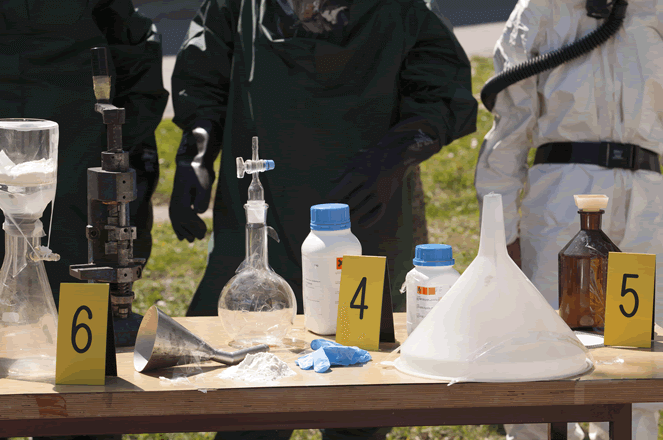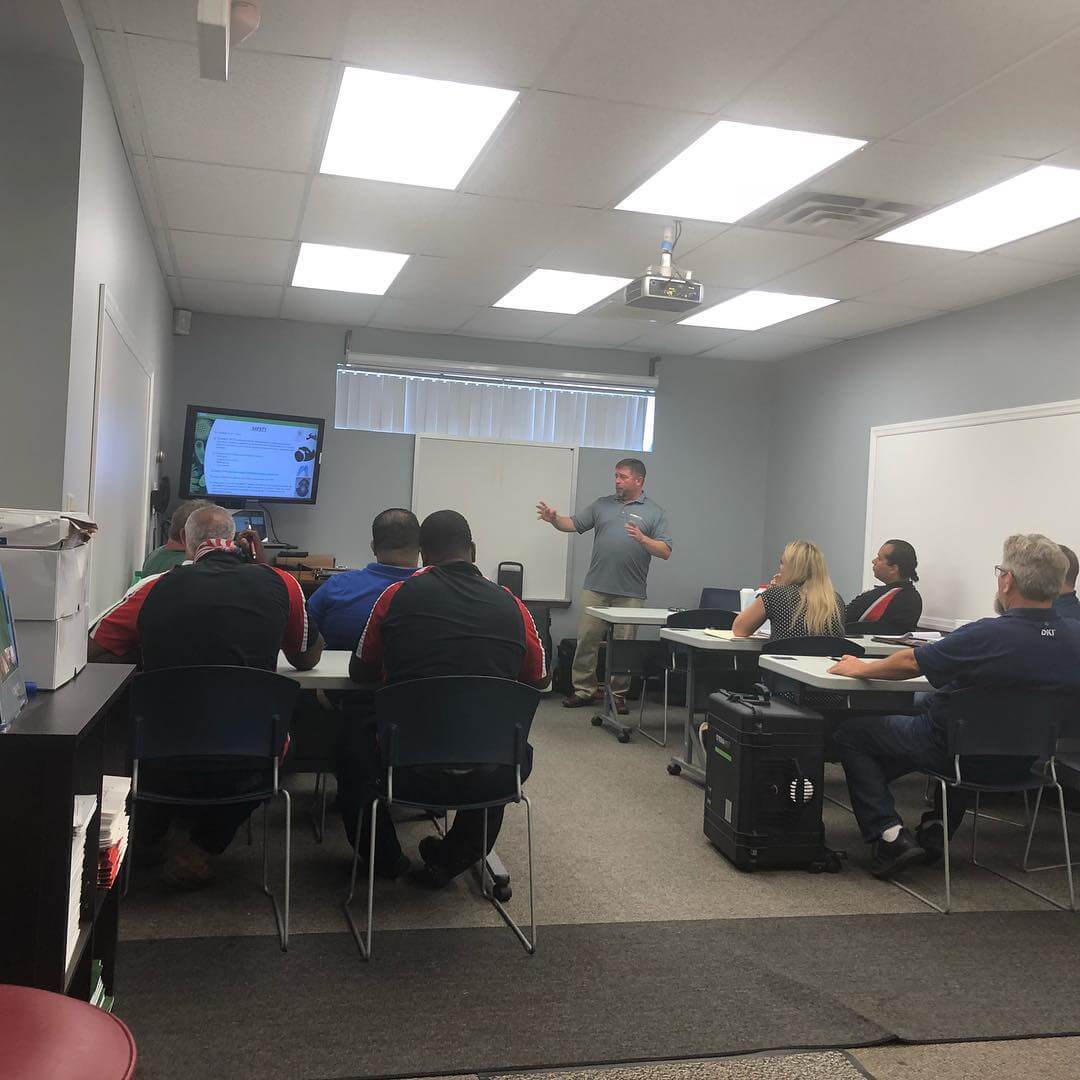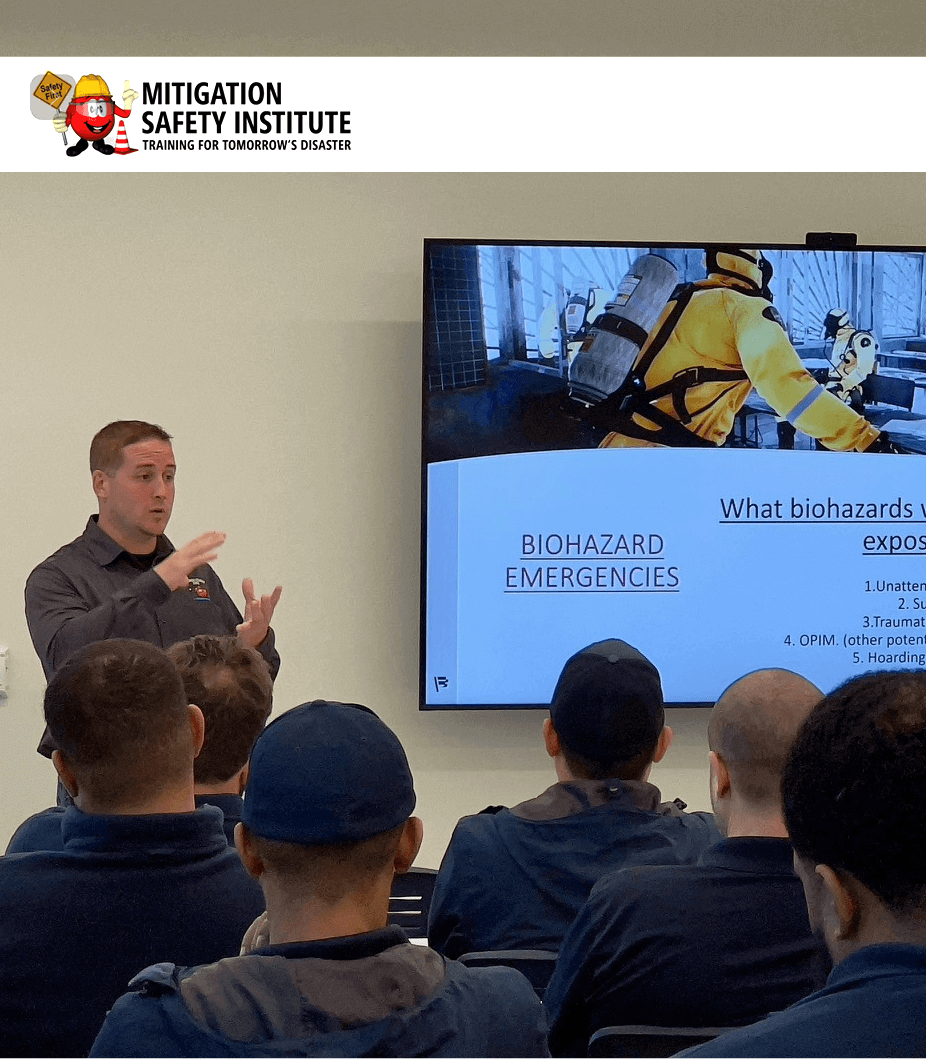
WELCOME
Welcome to the Mitigation Safety Institute (MSI), where we challenge the status quo of traditional training methods. At MSI, we recognize that effective safety training goes beyond theory—it’s about real-world application, expertise, and continuous innovation. That’s why we prioritize instructors who bring both deep theoretical knowledge and hands-on experience to the table. Our courses are designed to bridge the gap between classroom learning and real-world challenges, incorporating insights from leading industry experts, practical scenarios, and the latest trends in safety.
Our Audience
Our target audience consists of professionals and organizations within the disaster restoration, construction, and general industry sectors who are seeking to enhance their expertise and ensure workplace safety. This includes individuals working in disaster restoration, property damage restoration, and environmental remediation, such as technicians, project managers, and safety officers. Our courses are also designed for construction workers, supervisors, and site managers who need to meet OSHA safety standards and promote a culture of safety on job sites.
Additionally, we serve organizations aiming to train their teams in safety compliance, emergency preparedness, and hazard mitigation. This includes companies in the construction, manufacturing, and restoration industries, as well as those involved in environmental services or hazardous materials handling. We also cater to new entrants to these fields who need foundational training, as well as seasoned professionals looking to advance their knowledge, obtain certifications, or meet ongoing continuing education requirements.
Our courses are ideal for individuals or businesses dedicated to reducing risks, ensuring regulatory compliance, and enhancing the safety of their workforce, whether on construction sites, disaster response teams, or in high-risk industries. By providing accredited certifications and industry-recognized training, we help professionals gain the skills necessary to advance in their careers while contributing to a safer work environment.

INDUSTRY AND NEED
As of 2022, the Global Disaster Restoration market is valued at 41.2 billion dollars due to the increase in natural and man-made disasters, as we expect to continue to see large growth within the industry. With that being said the health and safety of the workforce is of paramount importance in the disaster mitigation industry due to the inherently hazardous nature of the work involved. Disaster mitigation involves efforts to minimize the impact of natural or man-made disasters on people, property, and the environment. This industry encompasses a wide range of activities, such as responding to large-scale events like earthquakes, floods, hurricanes, wildfires, chemical spills, and much more. The health and safety of our workforce responding to small everyday jobs like house fires, sewage backups, trauma scenes, and burst pipes is just as important but seems to go unnoticed by many companies.
As the workforce continues to grow our industry must identify the risk of physical hazards. Disaster mitigation often requires workers to operate in dangerous environments, such as collapsed buildings, flooded areas, or toxic chemical release sites. These environments can pose risks like structural collapses, electrocution, exposure to hazardous substances, and more. Proper safety training helps workers understand these risks and learn how to mitigate them effectively through the use of risk assessments and the OSHA hierarchy of controls.
At times the industry requires the use of specialized equipment like heavy machinery, power tools, drying equipment, emergency response vehicles, and communication systems. Operating these tools without proper training can lead to accidents, injuries, and even fatalities. Safety training ensures that workers know how to use equipment safely and appropriately.
As companies respond to these events, chaos can ensue, making it essential for workers to be trained in well-defined emergency response protocols. This includes knowing how to evacuate safely, administer first aid, communicate effectively, and work collaboratively in high-stress situations. Always understanding scene safety is the first step.
Exposure to hazardous materials and environments can have long-term health effects. Safety training helps workers recognize potential health risks and understand measures to prevent or mitigate such risks. Depending on the disaster type, workers may need to wear specific PPE to protect themselves from hazards such as chemicals, biological agents, falling debris, and extreme weather conditions. Proper safety training educates workers about the correct selection, use, and maintenance of PPE. The importance of understanding key hazards to which our workforce is typicals exposed like Asbestos, Lead, and Silica.
Effective communication is critical in disaster mitigation, both within response teams and when interacting with the public and your clients. Health and Safety training emphasizes clear and concise communication to ensure tasks are carried out accurately and efficiently. Disaster mitigation often involves interaction with affected communities. Safety training prepares workers to engage with community members, address concerns, and provide clear instructions to enhance public safety during emergencies.
Many states and even countries have stringent regulations and standards governing disaster response and mitigation activities. Safety training ensures that workers are aware of these regulations and can operate within legal boundaries.
Overview of Programs and Courses
At MSI, we offer a comprehensive range of industry-leading courses designed to equip professionals with the skills and knowledge needed to excel in disaster restoration, safety management, and related fields. Our IICRC (Institute of Inspection, Cleaning, and Restoration Certification) courses are tailored for individuals seeking to enhance their expertise in the disaster restoration industry. These certifications, recognized globally, cover key areas such as water damage restoration, fire and smoke damage restoration, mold remediation, and carpet cleaning. Our IICRC courses provide hands-on training and theoretical knowledge to ensure participants are fully prepared to tackle the challenges of real-world disaster response and recovery.
Why Choose MSI?
At MSI, we set ourselves apart by offering a comprehensive, hands-on approach to training in the disaster restoration and safety sectors. Our expert instructors bring a wealth of real-world experience, providing students with invaluable insights that go beyond theoretical knowledge. Whether it’s learning how to respond to a natural disaster or ensuring compliance with OSHA safety standards, our courses combine the latest industry trends with practical applications, ensuring that students are well-prepared for the challenges they’ll face in the field. We also emphasize personalized attention, with small class sizes and customized learning plans to meet the needs of each individual. Additionally, MSI partners with leading industry organizations, ensuring our training is aligned with the most current standards and regulations.
MSI’s commitment to innovation and excellence doesn’t stop there. We integrate cutting-edge technology into our training programs, offering immersive simulations and virtual reality modules to enhance the learning experience. Our state-of-the-art facilities are designed to mimic real-world environments, allowing students to practice their skills in scenarios that closely replicate actual job-site conditions. Furthermore, we provide ongoing support and resources for our alumni, including career counseling, certification renewal reminders, and access to updated course materials. At MSI, we strive to create a community of safety and restoration professionals who are not just trained but truly empowered to make a difference.


